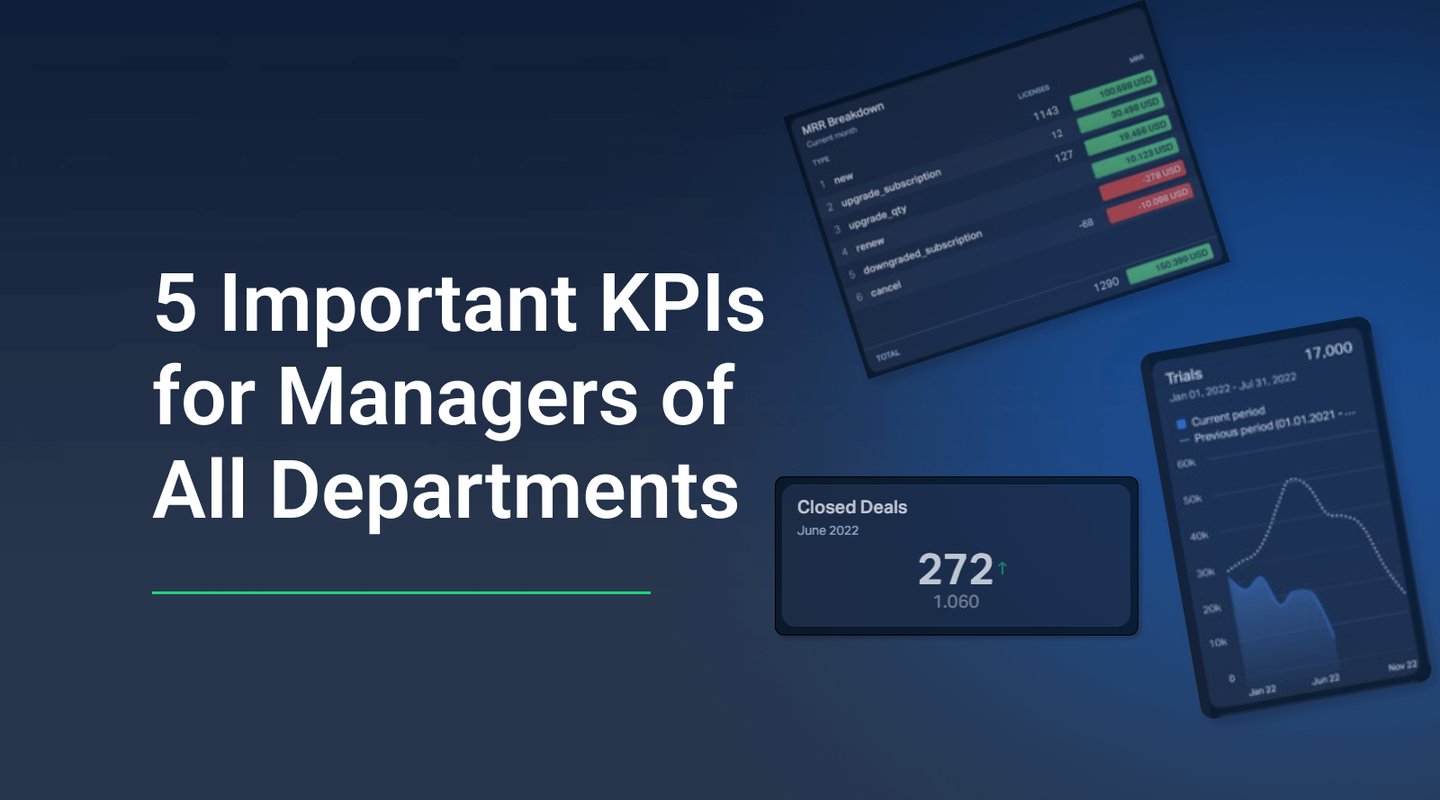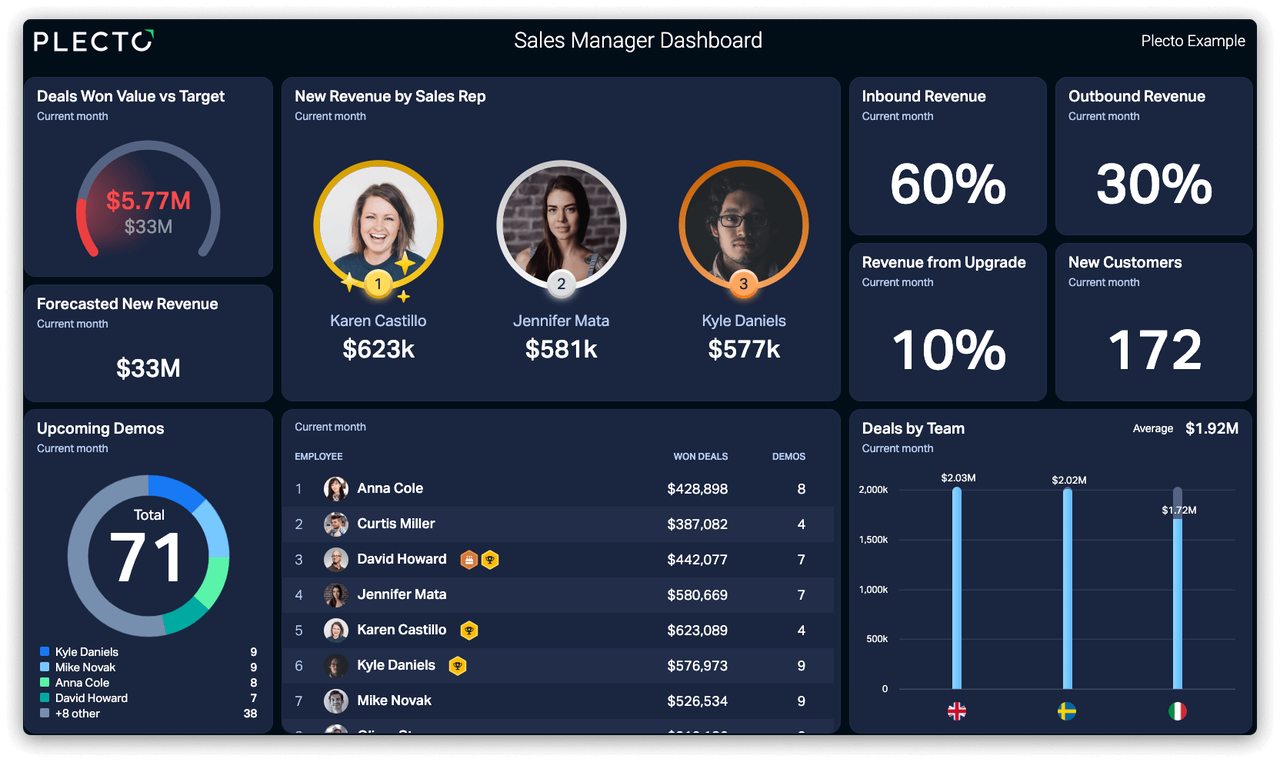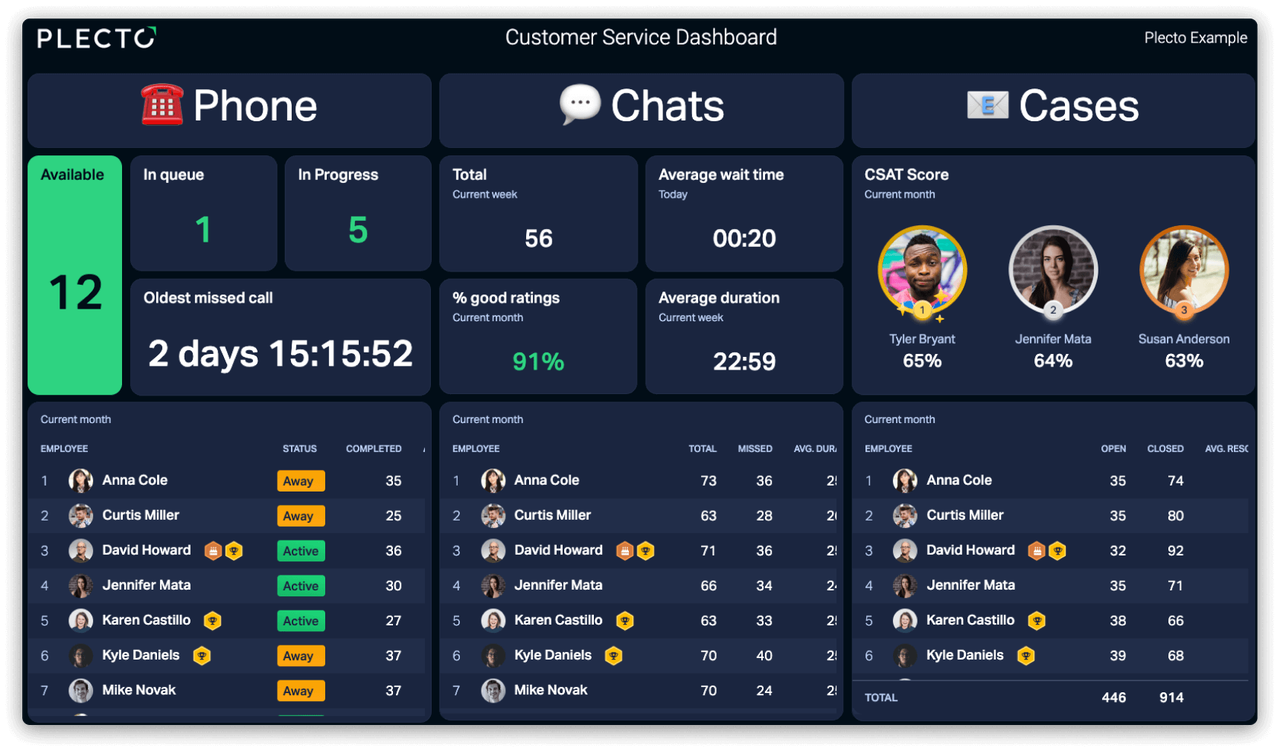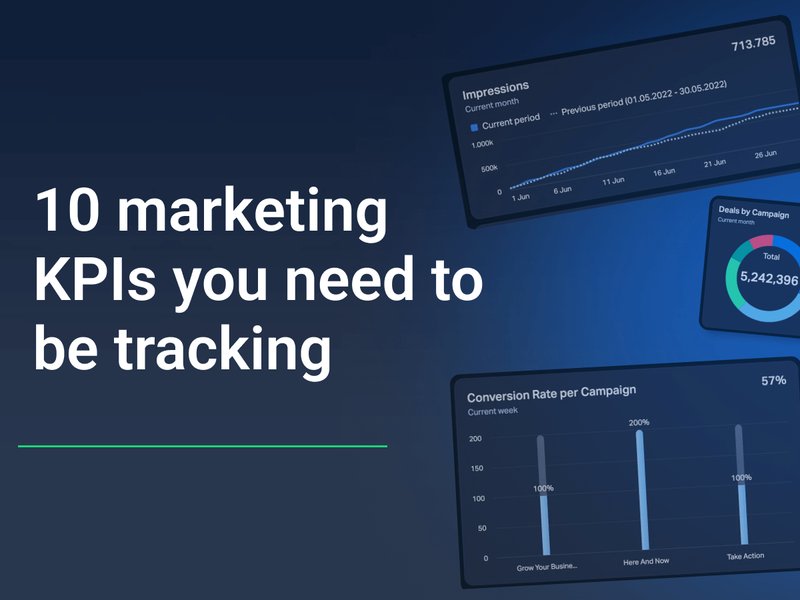Regardless of which department they’re responsible for, managers have a tough job. They straddle a difficult line between keeping their employees satisfied and performing their best – and delivering on the company’s performance goals.
This article suggests five KPIs for managers to help them get the best from their employees while hitting the expected targets. Regardless of which department you manage, this list of manager KPI examples is a great place to start if you want to become more data-driven in how you manage your team.
5 Important Manager KPI Examples
Using carefully chosen manager KPI metrics can be an effective tool to help build manager-employee relations while motivating employees to help push the company toward achieving its goals.
These five KPIs for managers are an excellent starting point for becoming more data-driven without sacrificing performance or goodwill within your team.
1. Employee Satisfaction/ Employee Net Promoter Score (eNPS)
Employees are the lifeblood of any organization. Without them, the company wouldn’t exist – but more importantly, they’re responsible for the company’s success or failure. Whether you use gamification, coaching, bonus programs, or a combination of these and more, it’s essential to keep your employees happy if they’re going to hit their targets. Conducting a regular mini-pulse survey or eNPS is an excellent way to keep tabs on how your employees feel about coming to work. Typically used to gauge customer satisfaction, eNPS gauges employee satisfaction by asking, “On a scale of 1–10, how likely are you to recommend our company as an employer to a friend?”
2. Employee Turnover Rate (ETR)
This manager KPI goes hand-in-hand with employee satisfaction. Dissatisfied employees will eventually look elsewhere. The cost of recruiting, training, and onboarding new employees can be substantial, especially in large teams. Keeping a close eye on this KPI will help you identify negative trends so you can take a closer look at what’s driving the attrition and take the necessary steps to nip it in the bud.
Build your first dashboard.
Start your 14-day free trial today
3. Absenteeism
An epidemic of absenteeism could indicate problems within the department. Look for spikes in “sick calls” or trends, like certain employees who call in sick every other week. In a vacuum, these one-off absences are easy to overlook but when considered as part of a trend, they can provide valuable insights into employee satisfaction and the well-being of those in your department.
4. Human Capital Value Added (HVCA)
Companies are in business to make money, so every employee must contribute to that mission. This manager KPI measures the extent to which employees add value to the business.
Use this formula to calculate it: revenue – (total costs – employment costs) ÷ number of full-time employees = HVCA
5. Future Skills Gap
The most successful companies are always looking ahead, trying to anticipate how the business landscape might change in the future. A key to future success is making sure that you have the right skills in-house to meet future business demands. Once you’ve identified potential gaps, keep them in mind when making future hires – or look for ways to develop those skills within your existing team.
In this process, you might also identify competencies that are currently lacking and that could make a positive and immediate difference to your business. Providing professional development opportunities has shown to be particularly effective in increasing employee satisfaction and retention, so it could make good business sense to invest in those skills now.
Track These KPIs For Managers with Automated Reporting
Tracking and acting on these five KPIs for managers will start you on the path to a more data-informed approach to managing your department. Plecto enables you to schedule and generate automatic reports with custom KPIs and real-time data to help you stay on top of what’s happening within your team.
Take your management skills to the next level. Sign up for a free 14-day trial of Plecto!





